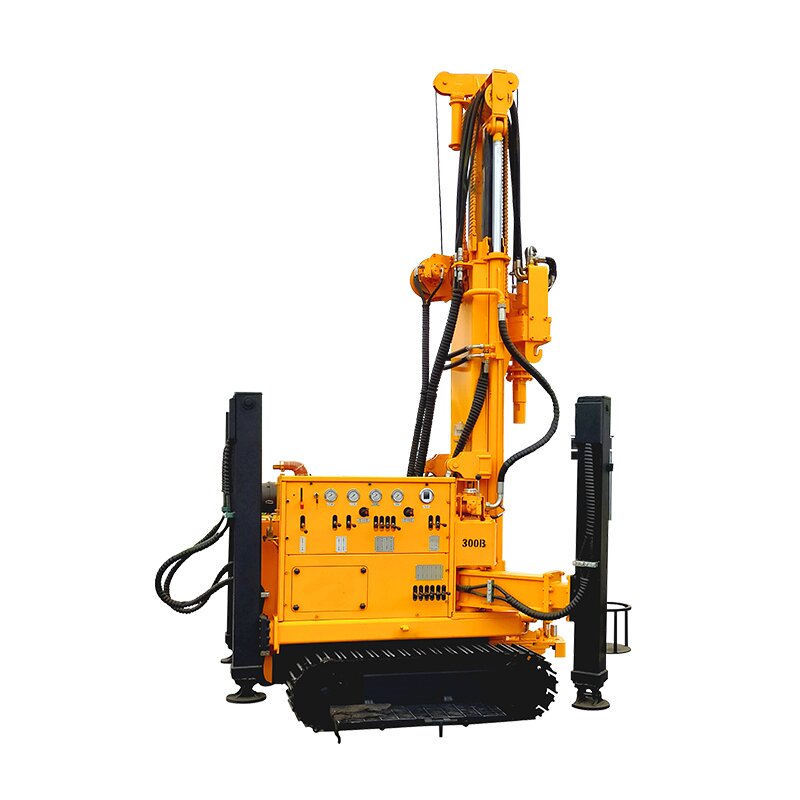2025 Procedures for Water Well Drilling Rig Well Flushing and Pumping Tests
The quality of a water well is absolutely key to making the most of the groundwater. Once the well is fully drilled (well completion), two critical steps follow: well cleaning (or development) and pumping tests. These steps directly impact how much water the well yields, the water quality, and how well it performs long-term.

Preparing the Ground
1. Gear Up: Before starting, you need the right equipment: a submersible pump or surge block for cleaning, a flow meter, a high-accuracy water level measuring device (like a depth sounder), and instruments to check water quality (like $\text{pH}$ meters, conductivity meters, and turbidimeters).
2. The Pearldrill Advantage: When a quality water well drilling rig like a Pearldrill is used, it usually guarantees the hole is straight and the walls are stable. This gives you a solid foundation for cleaning, meaning less drilling mud and rock cuttings are left behind in the first place.
Well Cleaning (Development) Standards
1. How We Clean:
Over-pumping: We use a powerful submersible pump to pump water out at a rate higher than the well’s design capacity. This extreme suction helps pull the fines out of the water-bearing rock formation (aquifer).
2. When is it "Done"? (The Pass/Fail Criteria):
Volume: We need to pump out at least three times the volume of the wellbore itself (this can be adjusted based on site conditions).
Water Quality Stability: This is the most important part. We check the water quality every 5 minutes until we get three consecutive readings that are stable:
Turbidity: Must be 10 NTU or less.
pH: The change between the three readings must be within pm 0.1.
Conductivity & Turbidity: The change must be within 10%.
3. Pearldrill Efficiency: If a Pearldrill rig was used with a good Mud Pump system, there will be less drilling mud invasion into the aquifer. This dramatically cuts down the time and effort needed for cleaning, speeding up the whole project.

Pumping Test Procedures
1. Test Types:
Constant Rate (Steady-State): Primarily used to find the long-term stable flow parameters.
Step-Drawdown (Non-Steady-State): Used to measure how water levels change over time during pumping and recovery, which tells us about the aquifer's properties.
2. Key Steps:
Level Monitoring: We use high-precision tools to accurately record the water level drop while pumping, and the water level recovery when the pump is shut off.
Flow Control: We use a flow meter to precisely control and record the pumping rate, ensuring it stays consistent for each test phase.
Data is Everything: We meticulously record start times, flow rates, corresponding water level drops, recovery times, and water quality checks.
3. Pearldrill Quality & Data Reliability: Because Pearldrill provides an excellent, uniform wellbore, the surrounding rock medium is more consistent. This helps ensure that the data collected during the pumping test is highly accurate and reliable, minimizing errors caused by an irregular well hole.
 Conclusion:
Conclusion:
Modern water well construction standards (like those in 2025) put a huge focus on precision and quantifiable data, especially the specific requirements for water quality and stability. Advanced machinery, like the Pearldrill water well drilling rig, is essential for meeting these standards. Its superior drilling technique and high-quality well completion don't just make drilling faster; they make the crucial follow-up steps—cleaning and testing—quicker and more reliable, ensuring the client gets a better, more accurate well, sooner.
Contact us
Want to Know More About Water Well Drilling Rigs Operation? Contact Us.


